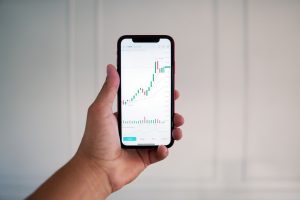The foreign exchange (forex) market is the largest financial market in the world, with an average daily trading volume of over $5 trillion. Despite its size and liquidity, trading in the forex market can be challenging and risky, especially for inexperienced traders. This is why having a solid understanding of currency trading strategies is crucial for success.
In this article, we will discuss 17 proven currency trading strategies that can help you profit in the forex market. We will also review a website by Mario Singh, an experienced forex trader, that provides valuable resources and education for traders of all levels.
1. Trend trading
Trend trading involves identifying and trading in the direction of the overall trend of a currency pair. This strategy is based on the assumption that prices tend to move in trends and that traders can profit by following these trends. Trend traders use technical indicators such as moving averages and trendlines to identify trends and determine entry and exit points.
2. Range trading
Range trading involves identifying the upper and lower boundaries of a currency pair’s price range and buying or selling when the price approaches these levels. This strategy assumes that prices tend to stay within a certain range for a period of time before breaking out. Range traders use technical indicators such as Bollinger Bands and support and resistance levels to identify price ranges and determine entry and exit points.
3. Breakout trading
Breakout trading involves identifying key levels of support and resistance and buying or selling when the price breaks through these levels. This strategy assumes that when prices break through these key levels, they will continue to move in the same direction. Breakout traders use technical indicators such as trendlines and channels to identify key levels and determine entry and exit points.
4. Swing trading
Swing trading involves buying or selling currency pairs based on short-term price movements that are not necessarily part of a larger trend. This strategy assumes that there are swings or fluctuations in currency prices that traders can profit from. Swing traders use technical indicators such as moving averages and oscillators to identify these swings and determine entry and exit points.
5. Scalping
Scalping involves making multiple trades in a short period of time and profiting from small price movements. This strategy assumes that small price movements are more frequent than larger ones and that traders can profit from these movements by making multiple trades. Scalpers use technical indicators such as moving averages and oscillators to identify short-term price movements and determine entry and exit points.
6. News trading
News trading involves buying or selling currency pairs based on the release of economic news or data. This strategy assumes that economic news and data can have a significant impact on currency prices and that traders can profit from these movements. News traders use economic calendars and news feeds to identify upcoming news events and determine entry and exit points.
7. Position trading
Position trading involves holding a position in a currency pair for an extended period of time, usually weeks or months. This strategy assumes that currency prices tend to move in long-term trends and that traders can profit by holding positions for the duration of these trends. Position traders use technical indicators such as moving averages and trendlines to identify long-term trends and determine entry and exit points.
8. Carry trading
Carry trading involves buying a currency with a higher interest rate and selling a currency with a lower interest rate. This strategy assumes that traders can profit from the interest rate differential between two currencies. Carry traders use economic calendars and interest rate differentials to identify currency pairs that offer the best carry trade opportunities.
9. Fibonacci trading
Fibonacci trading involves using the Fibonacci sequence to identify key levels of support and resistance. This strategy assumes that prices tend to move in predictable patterns based on the Fibonacci sequence and that traders can profit by identifying these patterns. Fibonacci traders use Fibonacci retracement and extension levels to identify key levels and determine entry and exit points.
10. Elliott wave trading
Elliott wave trading involves using the Elliott wave theory to identify key levels of support and resistance. This strategy assumes that prices tend to move in waves based on investor psychology and that traders can profit by identifying these waves. Elliott wave traders use wave counts and wave patterns to identify key levels and determine entry and exit points.
11. Ichimoku trading
Ichimoku trading involves using the Ichimoku Cloud indicator to identify key levels of support and resistance. This strategy assumes that prices tend to move within the Ichimoku Cloud and that traders can profit by identifying these levels. Ichimoku traders use the Ichimoku Cloud indicator to identify key levels and determine entry and exit points.
12. Price action trading
Price action trading involves using price movements and patterns to identify key levels of support and resistance. This strategy assumes that prices tend to move in patterns based on investor psychology and that traders can profit by identifying these patterns. Price action traders use candlestick patterns and chart patterns to identify key levels and determine entry and exit points.
13. Harmonic trading
Harmonic trading involves using harmonic patterns to identify key levels of support and resistance. This strategy assumes that prices tend to move in harmonic patterns based on the Fibonacci sequence and that traders can profit by identifying these patterns. Harmonic traders use harmonic patterns such as the Gartley and Butterfly patterns to identify key levels and determine entry and exit points.
14. Divergence trading
Divergence trading involves using divergences between price and technical indicators to identify key levels of support and resistance. This strategy assumes that divergences between price and technical indicators can indicate a change in trend and that traders can profit by identifying these divergences. Divergence traders use technical indicators such as the MACD and RSI to identify divergences and determine entry and exit points.
15. Volume trading
Volume trading involves using trading volume to identify key levels of support and resistance. This strategy assumes that trading volume can indicate the strength of a trend and that traders can profit by identifying high volume areas. Volume traders use volume indicators such as the On-Balance Volume and Chaikin Money Flow to identify key levels and determine entry and exit points.
16. Seasonal trading
Seasonal trading involves identifying seasonal patterns in currency prices and trading based on these patterns. This strategy assumes that currency prices tend to move in predictable patterns based on seasonal factors such as holidays and weather conditions. Seasonal traders use seasonal charts and historical data to identify seasonal patterns and determine entry and exit points.
17. Machine learning trading
Machine learning trading involves using machine learning algorithms to identify key levels of support and resistance. This strategy assumes that machine learning algorithms can identify patterns in currency prices that are not visible to human traders and that traders can profit by using these insights. Machine learning traders use machine learning algorithms such as neural networks and decision trees to identify patterns and determine entry and exit points.
In conclusion, currency trading strategies are essential for success in the forex market. These 17 proven strategies provide a wide range of options for traders of all levels and preferences. It is important to remember that no strategy is foolproof and that traders must always be prepared to adapt to changing market conditions.
Mario Singh’s website, How to Profit in the Forex Market, provides valuable resources and education for traders of all levels. Singh is an experienced forex trader and has written several books on forex trading. His website offers a range of resources including educational videos, webinars, and market analysis. Singh’s website is a valuable resource for traders looking to improve their knowledge and skills in the forex market.





